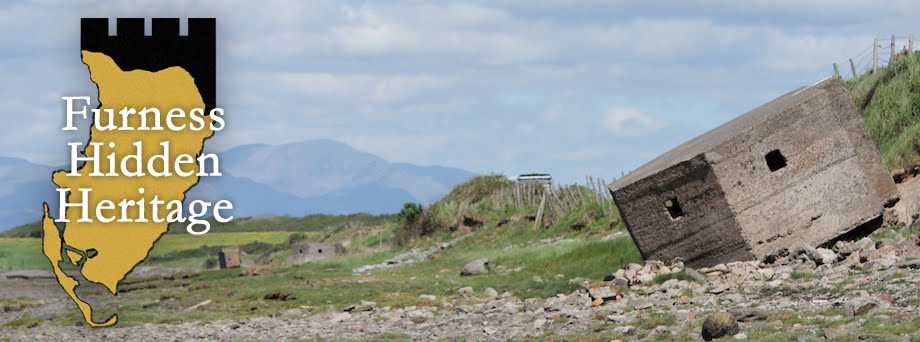There is no denying the beauty and tranquility of Furness Abbey nor its rich history. The Abbey was, in its day, the second richest abbey in the country, Fountains being the richest. Today the Abbey is managed by English Heritage and is open for visitors through out the year. There is nothing better than spending a few hours wandering around the ruins, exploring the buildings working out what was what.
The Crozier and Ring found at the Abbey in 2010 are now on permanent display in the visitor centre along with many other interesting artefacts, from carvings to effigies.
Highlight: Other than the expansive ruins, the Crozier and Ring with their fascinating new display.
The Dock Museum, Barrow
The Dock Museum is a wonderful little museum all about the industrial and shipbuilding history of Barrow-in-Furness. They also have a brand new gallery which showcases the earlier history of the Furness area. Built into a Victorian dry dock the museum is free to enter and several hours can certainly be spent exploring the displays, as well as the dock. There is also a film show area on the bottom floor with a selection of interesting documentary films to watch.
Highlight: The Stone Axe, Blood Axe, Conquest Gallery including the Viking Hoard and two superbly decorated lead weights.
Dalton Castle, National Trust
Once the court house and prison for Furness Abbey, Dalton Castle is a wonderful little peal tower sitting proudly overlooking Dalton. Owned by the National Trust and run by the Friends of Dalton Castle, the property is open on Saturdays from April to October and is well worth a visit. It may be a small property but there is much to discover with in as well as in the surrounding town.
Highlight: The Medieval dungeon or cell beneath the floor boards within the castle. The spiral staircase is pretty special too!
Swarthmoor Hall
Birthplace of the Quakers Swarthmoor Hall is a wonderful Tudor built mansion nestled in the countryside surrounding Swarthmoor and Ulverston. Open to visitors regularly throughout the year the hall has a lot to offer. The building itself is fascinating to wander around and there are some lovely gardens to stroll in too.
Highlight: The interesting wooden staircase to the back of the house with its central frame which once supported the roof!
Piel Castle, English Heritage
Piel Castle was built by the Abbot of Furness on the south-eastern point of Piel Island, to guard the deep-water harbour of Barrow-in-Furness against pirates and Scots raiders. The site boasts the ruins of a 14th-century castle, now in the care of English Heritage, with a large keep, inner and outer baileys and towered curtain walls. The island of Piel is a beautiful place that can be visited by a small ferry service running throughout the year, when the tide is right. You can really wile away the hours here and on a nice sunny day it is simply glorious!
Highlight: The expansive castle ruins, you can access the top of the main keep on certain days when it is opened.
Gleaston Water Mill
One of the only remaining water mills in the Furness area Gleaston Water Mill is a wonderful reminder of industrial times gone by. The building that stands today was built, or more precisely re-built, in the 1700s. The original mill dated back to the early 1300s and would have ground oats. Today you can visit the mill and look around inside and out as well as enjoy a lovely tea room just next door.
Highlight: The water wheel to the north of the mill, it may not work anymore but is lovely to see.
Conishead Priory
One of the only remaining water mills in the Furness area Gleaston Water Mill is a wonderful reminder of industrial times gone by. The building that stands today was built, or more precisely re-built, in the 1700s. The original mill dated back to the early 1300s and would have ground oats. Today you can visit the mill and look around inside and out as well as enjoy a lovely tea room just next door.
Highlight: The water wheel to the north of the mill, it may not work anymore but is lovely to see.
Conishead Priory
Now home to a Buddhist community Cornishead Priory has had a long and vivid history. Originally a Medieval priory it later became the home of Colonel Thomas Braddyll who built much of what is seen today, before being turned into a hotel. It has also spent time as a holiday home of sorts for the Durham Miners and a military hospital. The Buddhist community took possession of the building in 1976 and have since been slowly bringing it back to life. The grounds to the priory are open to the public throughout the year, except when large Buddhist events take place, there is also a lovely little cafe inside part of the building. Unfortunately the whole building isn't often open to the public.








Furness Abbey is a former hermitage located in the northern borders of Cumbria, England. I have listened much about this but never visit this yet. I like the information about this area and other destinations of this area that author of this blog have provided here. I’m an arts student and love to visit these kind of Heritage Attractions. After reading this blog I must visit these attraction but first I have to complete my miami tours.
ReplyDelete